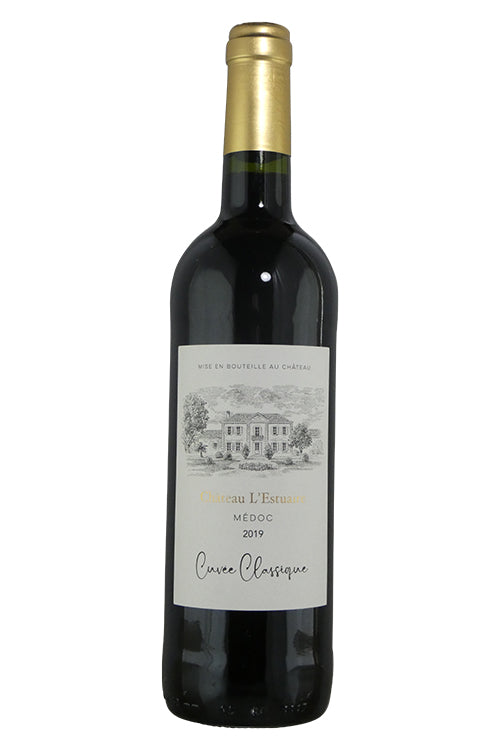1
/
of
1
L'Estuaire Cuvee Classique Medoc - 2019 (750ml)
L'Estuaire Cuvee Classique Medoc - 2019 (750ml)
Regular price
$19.99
Sale price
$19.99
Regular price
$24.99
Unit price
/
per
Share :

- varietal
- Region
- Sub - Region
- Type
- Reviews
Cabernet Sauvignon is one of the most prominent dark-skinned grape varieties except Merlot in terms of area under vines, but which comprises our largest selection of wines. Grown in just about every wine producing region and climate, Cabernet Sauvignon can express a huge range of aromas, from green peppers in cool climates through to dark jammy fruit in hot regions. Common aromas include blackcurrants, mint, graphite, and forest floor, to name a few. Maturation in small oak barrels can develop a complex range of aromas from cedar wood, cigar box and tobacco to eucalyptus and undergrowth. Cabernet Sauvignonâ??s success is partly due to its ability to adapt to a range of soils and climates. It is the main constituent of the Bordeaux blend in the revered communes of Pauillac, St. Estephe and St. Julien, and has achieved equal success in Californiaâ??s Napa Valley. It is grown extensively throughout Southern Australia, with some outstanding examples from the Terra Rossa soil of Coonawarra. Cabernet Sauvignon also plays an increasing role in Tuscany, Italy, where it is blended with native varieties such as Sangiovese to produce the Super Tuscans.
Located in South West France, Bordeaux is one of the Worldâ??s most important wine producing regions. The Gironde estuary and its two tributaries, the Garonne and Dordogne, splits the region into the â??left bankâ?? and â??right bankâ??. The left bank, on the west side of the Gironde, consists of the M??doc and Graves, while Pomerol and St. Emilion are located on the right bank. In between the Garonne and Dordogne is the Entre-Deaux-Mers region, French for 'between two seas'. From north to south the M??doc includes the famous classed growth chateaux in the communes of St. Estephe, Paulliac, St.Julien, and Margaux. The Graves and itâ??s enclave Pessac-L??ognan make both red and white wine. While those of Pessac- L??ognanâ??s are dry, Sauternes and Barsac make world-famous sweet whites. Although Bordeaux makes some of the worldâ??s most expsenive wines, less expensive but good value alternatives come from Moulis and Listrac on the left and Bourg and Blaye on the right offer less expensive wines for earlier consumption.
Bordeaux Superieur wines are, as their name implies, a slightly "superior" form of standard Bordeaux AOC wines. The sup??rieur appellation is open to both red and white wines from anywhere in the Bordeaux region, which stretches 80 miles (130km) from Sainte-Foy in the east to the very north-western tip of the Medoc. Bordeaux Superieur wines are produced from the classic Bordeaux grape varieties. The reds rely heavily on Cabernet Sauvignon, Merlot and Cabernet Franc with smaller quantities of Malbec and Petit Verdot. Very occasionally, a splash of Bordeaux's long-lost Carmenere might also find its way into the blend, but only a handful of the region's vineyards are growing the variety. The white wines are produced mostly from Sauvignon Blanc and Semillon, with smaller quantities of Muscadelle and Sauvignon Gris.
Red wine is wine made from dark-coloured grape varieties. The color of red differs based on the grapes variety or varieties used.Interestingly, black grapes yield a juice that is greenish-white. The actual red color comes from anthocyan pigments (also called anthocyanins) from the skin of the grape (exceptions are the relatively uncommon teinturier varieties, which produce a red colored juice). Most of the production centers around the extraction of color and flavor from the grape skin.


